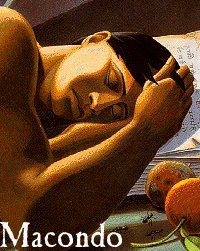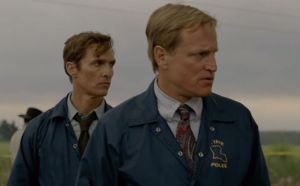Roper Hospital and I go way back, way back to the early 50’s, back before my gestation, when my student nurse mother met my GI-Bill Clemson undergraduate father whose own mother was dying of cancer.
Smitten by a redhead in a uniform, Future Daddy asked Future Mama out.
As the story goes, Daddy’s go-to dating strategy was sympathy — not only was his mother dying, but he was so poor that he didn’t own any underwear. To prove he lacked boxers/briefs, he lifted his shirt, yanked checkered swim trunks into view. Perhaps being impoverished was sexy to children who grew up in the Depression. Don’t think it would necessarily work today.
Anyway, this counterintuitive romantic ruse worked. Sue and Wes went out. My grandmother died. Sue and Wes eloped, dropped out school, engendered me. [1]
A bad karma kind of coming to be, if you stop and think about it.
* * *
My beloved has been diagnosed with a difficult, rare, and therefore frightening cancer called Peripheral T-Cell Lymphoma.
I won’t burden you with the existential horrors of waiting . . . waiting . . . waiting, . . . in the primary care physician’s outer rooms/inner rooms . . . in the West Ashley Roper Cancer Center’s outer rooms/ inner rooms . . . trying to read the faces and body language of the physicians as they enter . . .
. . . a pleural effusion . . . a mass . . . cancer . . . probably lymphoma . . . t-cell lymphoma . . . blood work . . . CT scans . . . marrow bone biopsies . . .
* * *
We’re at the downtown Roper, my mama’s Roper, my dead grandmama’s Roper.
My beloved’s here for five days, Monday through Friday, for 96-hours of constant infusion of a chemo regimen that goes by the acronym EPOCH. She’ll go home Saturday, have two weeks off, then return to Roper for five more days and repeat this pattern for six to eight cycles.
 So Roper has become our home away from home.
So Roper has become our home away from home.
What this hospital lacks in Spa-like aesthetics it makes for in interesting walks and outdoor venues. Because it’s been added on so often, Roper’s labyrinthine hallways might give Theseus a run for his money. It’s almost as if MC Escher himself designed the building. I park in the Doughty Street parking lot, which offers a fairly straight shot through the back door to the D elevators, which I take me up to the 5th Floor, Oncology. On the other hand, reaching the cafeteria from my beloved’s room is the human equivalent of a white rat’s journey towards the cheese.
The room itself is spacious and looks out on a narrow walkway. Because the walkway is only about fifteen feet wide, it gets no sun, so when you look through the narrow slats of the Venetian blinds, it’s always 9-pm dark out there, whether it’s 7am, noon, or 3 in the afternoon, I’ve dubbed this space the Twilight Zone. As it turns out, the window’s tinted black, which accounts for the perpetual night outside.
My beloved’s oncologist wants her to walk, so she does, hauling the chemo cart as she goes. On her excursions, she has discovered an accessible deserted hallway that brings to mind the former Soviet Union.
Here they store broken beds and other non-functioning equipment. The names of dead doctors appear beneath some of the doors. I love it back there — an objective correlative for aging’s entropy. Perhaps in one of these small rooms my grandmother died — but probably not. Even this old wing probably post dates her.


The nurse’s station on the 5th Floor looks out onto the Ashley River. The 5th Floor also boasts a balcony with a view of Charleston’s most notable steeples. This morning’s humid breeze was strong enough to blow a string of meds off my beloved’s cart.
Of course, you can’t expect residing on a cancer floor not to have its downsides, like the constant moaning of a sleeping man a twist and turn further down in the hall.
Nevertheless, this isn’t Solzhenitsyn’s Cancer Ward. The nurses are great, and you hear a lot of laughter here.
[1] Crass Casualty and dicing Time.





















